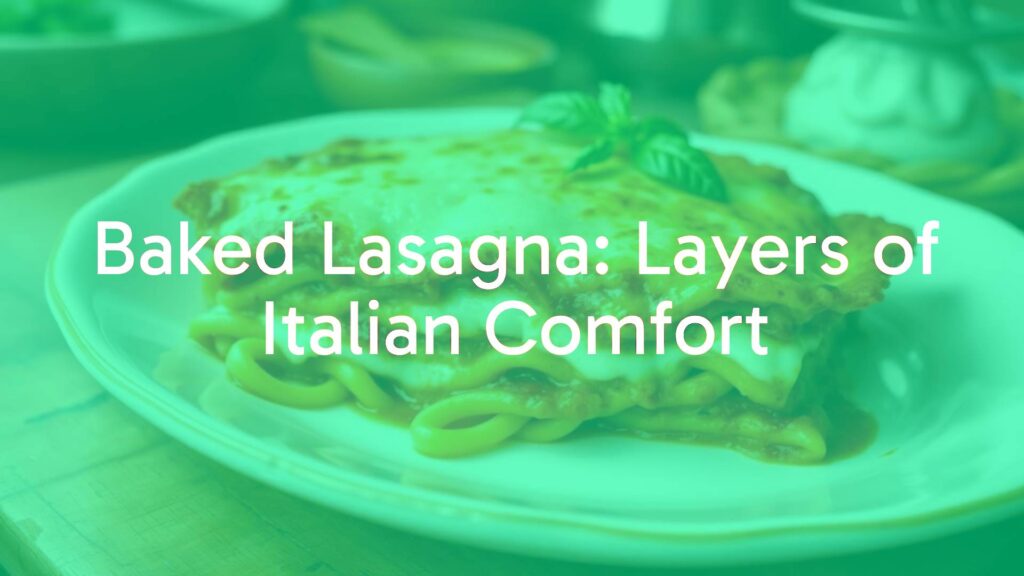Baked Lasagna: Layers of Italian Comfort
Introduction to Baked Lasagna
Baked lasagna stands as one of Italy’s most celebrated culinary creations, recognized worldwide for its hearty layers and rich, comforting flavors. It is a quintessential oven-baked dish where sheets of pasta are interwoven with savory sauces, cheeses, and fillings, making it a centerpiece on family tables and at festive gatherings alike.
Character & Appeal
The hallmark of baked lasagna lies in its structured layers: tender pasta sheets alternate with robust tomato or meat sauces, creamy béchamel or ricotta, and a melting layer of cheese. The finished dish is golden on top, with bubbling cheese and perfectly defined layers. Its appeal is rooted in the harmonious blend of textures—soft noodles, hearty fillings, and a crisp, caramelized cheese crust—and flavors that meld beautifully during baking.
Historical Context & Regional Importance
Lasagna traces its origins to the Italian region of Emilia-Romagna, particularly associated with the city of Bologna. The dish has ancient roots, with pasta layered with other ingredients appearing in Roman times, though the classic baked lasagna took shape during the Middle Ages. Over time, it became a symbol of hospitality and abundance, often served on special occasions such as Carnival or family celebrations. Various regions in Italy have since adapted lasagna to include local ingredients and preferences, making it a diverse and cherished staple across the country.
Key Ingredients
The essential components of classic baked lasagna include:
- Lasagna Pasta: Usually wide, flat sheets, either fresh or dried.
- Meat Sauce: Typically a slow-cooked ragù made with ground beef or pork, tomatoes, aromatics, and sometimes wine.
- Béchamel or Ricotta: In northern styles, creamy béchamel sauce is layered, while in southern regions, ricotta and mozzarella prevail.
- Cheese: Parmesan or Pecorino Romano are often used for added richness and flavor.
Popular Variations & Ingredient Substitutions
Baked lasagna sees a wealth of regional and modern variations. In Naples, for example, the dish might incorporate mozzarella, ricotta, hard-boiled eggs, or small meatballs. Vegetarian options often feature spinach, zucchini, or eggplant as fillings. For those seeking lighter or gluten-free alternatives, zucchini slices or gluten-free pasta serve well as substitutions. Dairy substitutions, such as plant-based cheeses and béchamel, are also increasingly popular.
Serving & Pairing Suggestions
Baked lasagna is typically served as a main course, sliced into squares to showcase its vibrant layers. It pairs wonderfully with a simple salad, roasted vegetables, or crusty bread. For beverages, a medium-bodied red wine such as Chianti or Sangiovese complements the richness of the dish, while sparkling water or a light lager appeals to those preferring non-alcoholic options.
Conclusion
With its inviting aroma and unmistakable layers, baked lasagna delivers both tradition and indulgence in every bite. Its adaptability ensures that, whether enjoyed as the classic Bolognese version or a seasonal vegetable variation, it remains a beloved classic in Italian households and beyond.

